
"Successful business opening - pizza delivery" in Hankyoreh. A man who worked for 20 year in Hyundai Heavy Industries (현대중기산업) until its demise with the currency crisis (the term used in the article, not "IMF crisis") has become a successful pizza delivery shop keeper. At first he thought of becoming a chain shop operator, but he was short of money, and ended up having a place on his own. (Opening a restaurant as a part of a chain takes more money but less individual effort than an independent shop.)
In '99, he managed to obtain a shop space without the "premium" (kwôlligûm); guarantee was 7 million and monthly rent 350 000. (He seems to have been lucky, as at that time the "guarantees" were cheap. (우선 집을 담보로 은행에서 2천만원을 빌려 창업자금을 마련했다. 권리금 없는 점포를 보증금 700만원에 월세 35만원을 주고 얻었다. 아내와 큰아들은 청계천 시장에서 벽지와 바닥재를 사왔고, 염 사장은 웬만한 수납장은 직접 만들었다. 이렇게 온 가족이 총동원돼 1999년 말 드디어 피자가게를 열었다.)
At first he really had problems with the severe competition, selling only for 100 000 W at some days (meaning some 10 pizzas in a day). He didn't lose his perseverence though, and developed new ideas for staying afloat. Name of the shop, Ssolle, was part of the distinction-making: a combination of the Italian sole (sun) and Korean ssoda (to shoot). Other small things: he always gives change in shiny new coins, and makes afterwards a call to a new customer to make sure the taste was ok.
Present sales: weekdays 400 000 (€270), weekends 900 000 (€600), some 15 million (€10 000) a month. Some 8 million is left as net profit after materials, rent (500 000), advertising (500 000) and so on are deducted.
Now Mr Ôm (Ôm sajang) is thinking of expanding his business by recruiting other "family shops" (kajokchôm) under his brand name Pizza Ssolle. (The photo looks like a non-Korean hasuk boarder getting a pizza delivery, with the landlady giving support.)
We don't know if this is purely a delivery shop; there are those who either have no seats in the shop itself or have only very few (and actually may prefer the customers not to come there). I don't envy Mr Ôm unless his business is good enough for a delivery guy to whom he needs to pay something like 2500-3000 won an hour (there's no mention of such). As mentioned in the "specialist opinion" part of the article in the bottom, pizza delivery shop needs to be "closely attached" with the local residents, that is they are very much "neighborhood business" (that's a term for me), but with the success as described in the article, recruiting branch shops, it's already going beyond being a neighborhood shop.
(None of the people I know in my neighborhood in Seoul has expanded the business; there was one who moved to a provincial town to do bigger businesses, but I lately got to know that he went bankrupt, and most likely I've lost contact to him forever.)
Two Chosun Ilbo small business articles or infomercials tell of good business ideas in the "wellbeing era." We see that the era is truly modern from what it's in Korean: welbing. As a non-native speaker of English I cannot be sure how Konglishized this is, but something seems to be wrong with "well-looking", or welluk'ing as McCune-Reischauer system renders the Korean script into Latin one. "Healthily and beautifully" and "Occupations with prospects on the 'well-being era'".. In the latter, all the five occupations presented have an English-language originating name: programmer, trainer, designer, coordinator, silver-sitter.
Here's an essay on the Korean language by Vladimir Tikhonov (Pak No-ja), the Russian-born Korean national who teaches now at the University of Oslo. He puts so well the tendency to mark modernity and development by use of English words: "In socio-psychological aspect, use of elements of “Konglish” in everyday speech signifies that the speaker possesses qualities of being relatively young, well educated, and urban, as well as the use of academic English loan words in scholarly speech is usually aimed, consciously or unconsciously, at making Westernized/highly educated/progressive image of oneself." I guess he is the only person with whom I communicate in three languages, depending on the context: English, Norwegian-Swedish and Korean. (As the non-Norwegian faculty is required to learn Norwegian, he's done that, and in a very short time. I've learnt Swedish in school, and these two languages are very close.)
Categories at del.icio.us/hunjang: shopkeepers ∙ Koreansociety |









 As the Tower Plus apartment has become the symbol of wealth and all the excesses that are associated with it in Korea, it looks like an appropriate place if one is to make a point about income divide. The ritual will be a salp'urikut, which to my knowledge is not the kind that's usually performed for the "wrongfully deceased", but it's not important here. Shamanism is used here in the same manner as in my
As the Tower Plus apartment has become the symbol of wealth and all the excesses that are associated with it in Korea, it looks like an appropriate place if one is to make a point about income divide. The ritual will be a salp'urikut, which to my knowledge is not the kind that's usually performed for the "wrongfully deceased", but it's not important here. Shamanism is used here in the same manner as in my 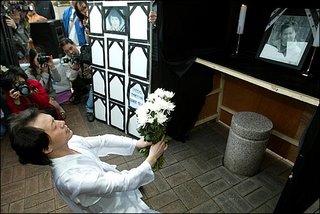
 These seem to be examples of "Koreanizing" the small business (or fast food) modernity, to put in an unnecessary complex terms. The idea with these businesses is that they are easy to operate, "just following the recipe", and thus do not require a lot of skil. And one important detail in the two cases of franchise shops that are introduced is that they both are former wage-earners in white-collar occupations. It looks as if they gave up their positions voluntarily and started the businesses, but I'm not sure. I don't dare to say that the status distinctions between fairly well-paid white-collar occupations and low-skilled ("non-professional") small businesses have diminished that much, but at least there has for a longer time been a tendency to "professionalize" many small business types. "This and this kind of a restaurant can also be a venture (벤처)", and so on. And the use of chônmunjôm to mean a specialty shop.
These seem to be examples of "Koreanizing" the small business (or fast food) modernity, to put in an unnecessary complex terms. The idea with these businesses is that they are easy to operate, "just following the recipe", and thus do not require a lot of skil. And one important detail in the two cases of franchise shops that are introduced is that they both are former wage-earners in white-collar occupations. It looks as if they gave up their positions voluntarily and started the businesses, but I'm not sure. I don't dare to say that the status distinctions between fairly well-paid white-collar occupations and low-skilled ("non-professional") small businesses have diminished that much, but at least there has for a longer time been a tendency to "professionalize" many small business types. "This and this kind of a restaurant can also be a venture (벤처)", and so on. And the use of chônmunjôm to mean a specialty shop. The possam and chokpal places are frontrunners in the Korean-style ad leaflet aesthetics: who shouts out the most with the ad flyer layout.
The possam and chokpal places are frontrunners in the Korean-style ad leaflet aesthetics: who shouts out the most with the ad flyer layout. 







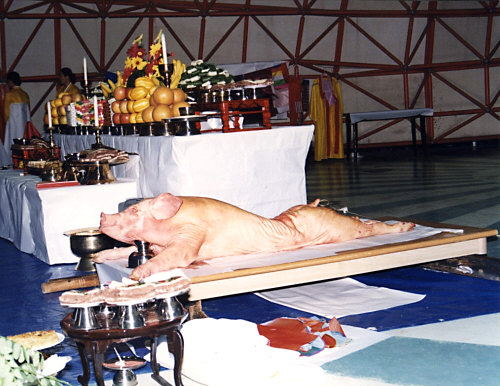
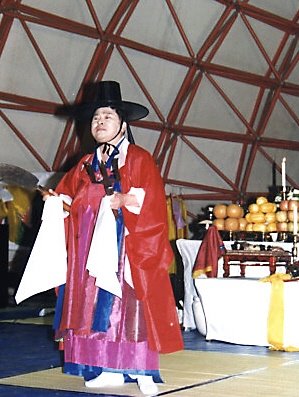
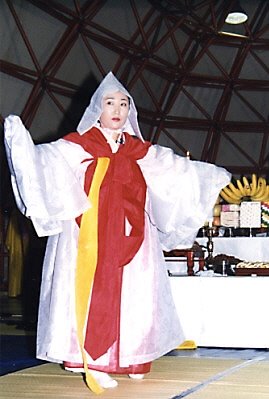
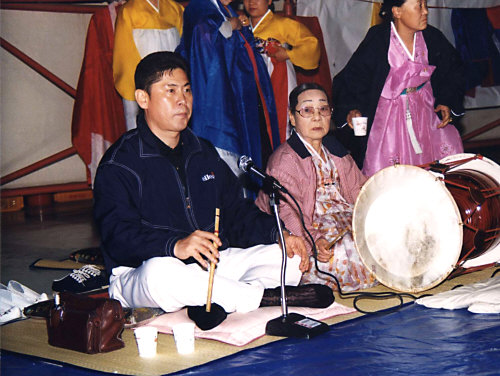

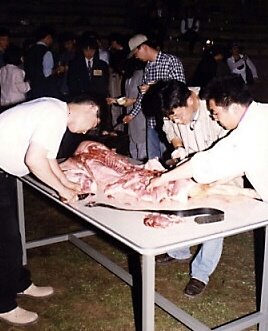
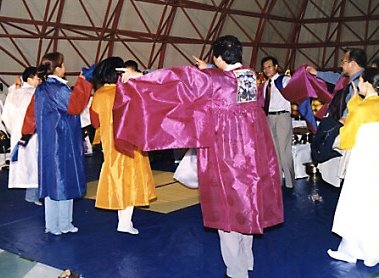


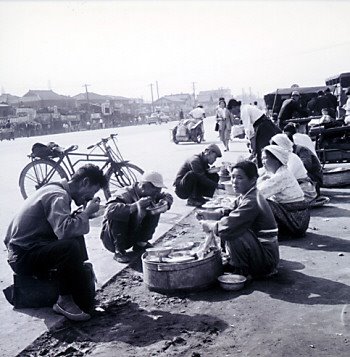 A manmunmanhwa (漫文漫畵), newspaper "picture story", from 1930 tells that one bottle of beer cost two days' wages of a skilled worker and a four days' wages of a carrier. (From Sin Myông-jik: Modôn Ppoi Kyôngsôngûl Kônilda, see the side gutter.)
A manmunmanhwa (漫文漫畵), newspaper "picture story", from 1930 tells that one bottle of beer cost two days' wages of a skilled worker and a four days' wages of a carrier. (From Sin Myông-jik: Modôn Ppoi Kyôngsôngûl Kônilda, see the side gutter.) 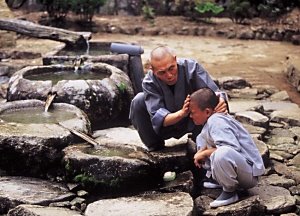
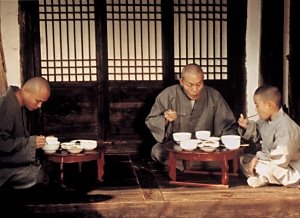
 Visited the internet site of the monthly
Visited the internet site of the monthly  I find it remarkable though that Korean street vendors are willing to enter into international unions like this; 일단 못사는 나라들하고 놀아주는 건 적극적으로 평가해야지.
I find it remarkable though that Korean street vendors are willing to enter into international unions like this; 일단 못사는 나라들하고 놀아주는 건 적극적으로 평가해야지.
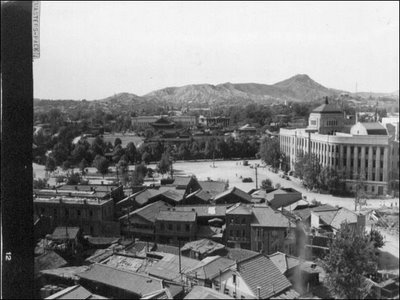
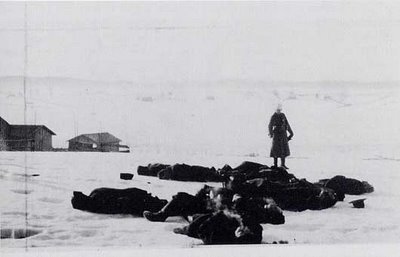 The kind of pictures shown in the link above and the thing that the attempts to legislate the examination of the facts behind the killings have been thus far not succeeded always bring to mind what happened in my country in 1918. (In many places in ROK, the Korean War was also a local civil war, which very much resembles the Finnish 1918.) Truth commission? It took 80 years before a government-promoted all-encompassing
The kind of pictures shown in the link above and the thing that the attempts to legislate the examination of the facts behind the killings have been thus far not succeeded always bring to mind what happened in my country in 1918. (In many places in ROK, the Korean War was also a local civil war, which very much resembles the Finnish 1918.) Truth commission? It took 80 years before a government-promoted all-encompassing 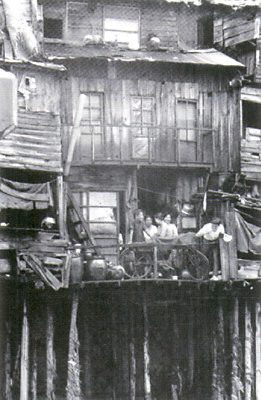 The reopening of Ch'ônggyech'ôn (Cheonggyecheon) river flowing through downtown Seoul first looked like a wonderful idea and got a lot of praise; the noise raised by the street peddlers driven away seemed to settle soon and their position did not get much support. Just like the covering of Cheonggyecheon in the 60s was associated with the ideas of development and modernization at the time, the reopening project has to do with the current ideas of modernity of development, this time not traffic and flow of goods and people but by leisure, quality of life, "green values" etc. After the Korean war the Cheonggyecheon became a site of squatter settlement, with 2-3 storey shacks built on poles on both sides. It was definitely not a pretty sight except for those who want to glorify poverty. They are not missed, but it's the other links with the history of Seoul and Korea that have given meaning to the new criticisms: Chosôn era trade, proximity to Tongdaemun market, Chosôn era architecture and construction landmarks.
The reopening of Ch'ônggyech'ôn (Cheonggyecheon) river flowing through downtown Seoul first looked like a wonderful idea and got a lot of praise; the noise raised by the street peddlers driven away seemed to settle soon and their position did not get much support. Just like the covering of Cheonggyecheon in the 60s was associated with the ideas of development and modernization at the time, the reopening project has to do with the current ideas of modernity of development, this time not traffic and flow of goods and people but by leisure, quality of life, "green values" etc. After the Korean war the Cheonggyecheon became a site of squatter settlement, with 2-3 storey shacks built on poles on both sides. It was definitely not a pretty sight except for those who want to glorify poverty. They are not missed, but it's the other links with the history of Seoul and Korea that have given meaning to the new criticisms: Chosôn era trade, proximity to Tongdaemun market, Chosôn era architecture and construction landmarks. The latest development is the
The latest development is the